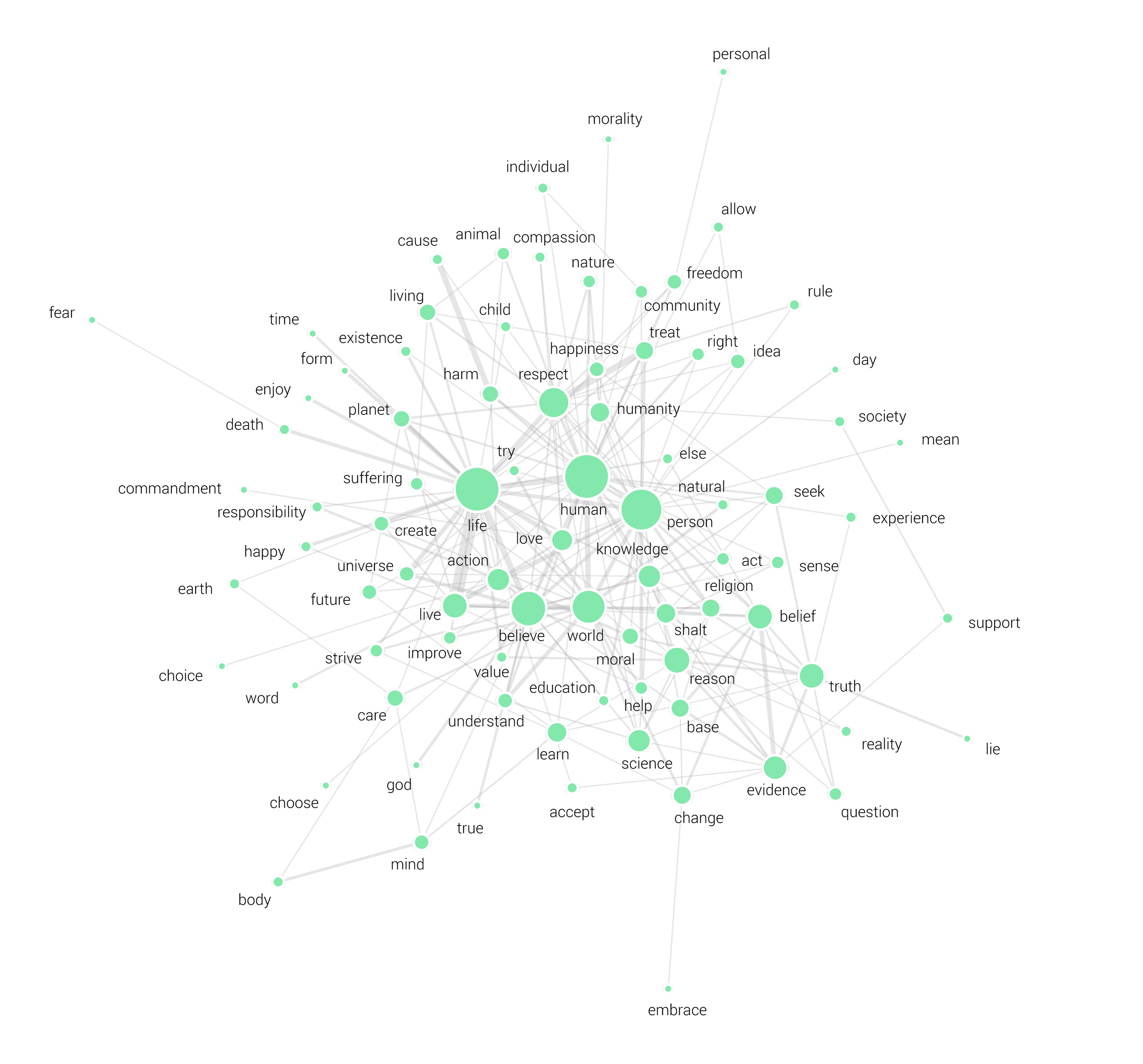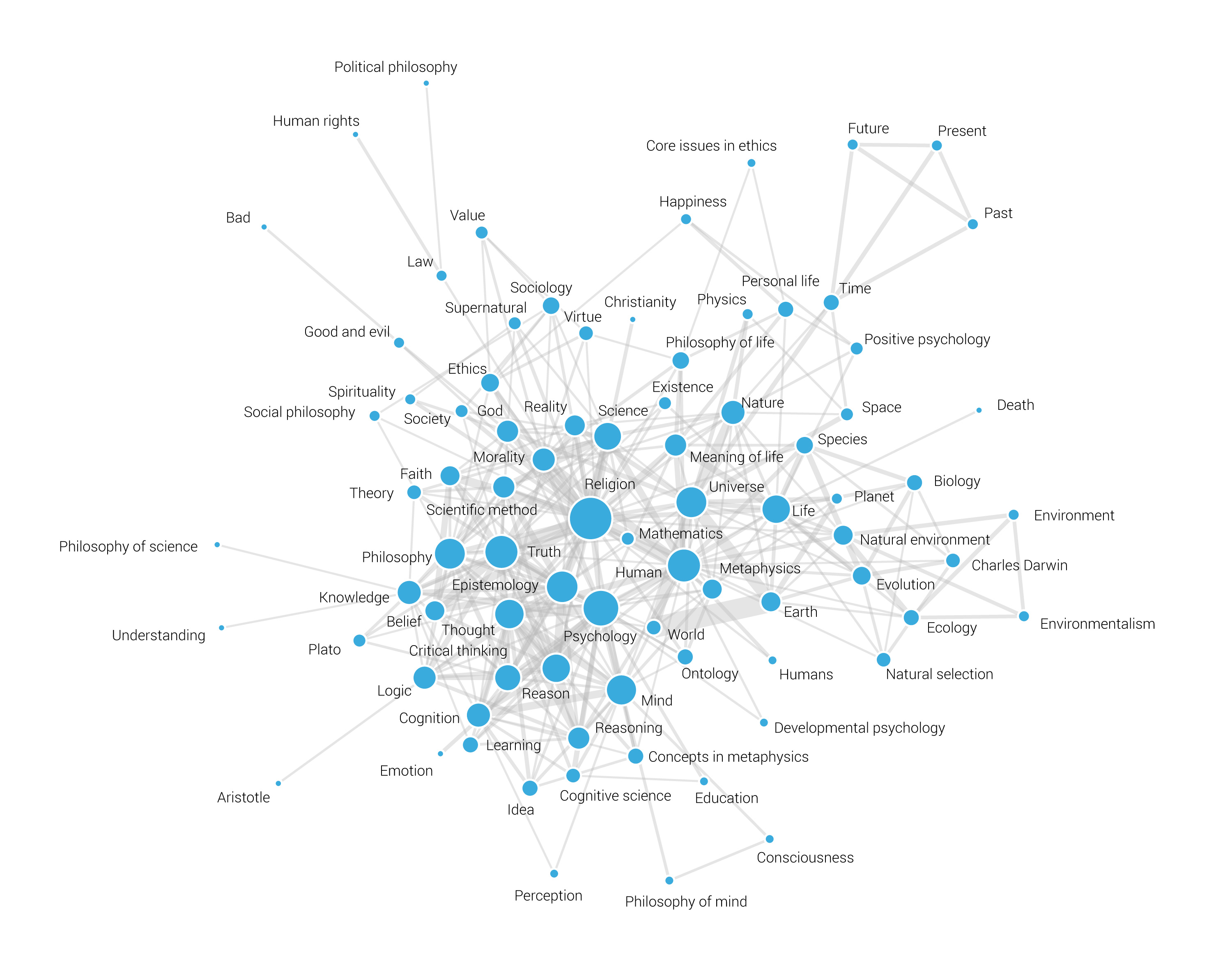To get a better sense of the types of beliefs that were entered, we analyzed the 2804 beliefs through text mining and interactive visualizations. The results reveal a map of the most common concepts and keywords and how they relate to each other.
What are the most common keywords?
Keywords are terms explicitly mentioned in the beliefs. Words with a similar basic meaning (e.g. children and child) have been grouped together and considered the same. On the left, it is possible to see the distribution of the top 100 keywords extracted. The number indicates the frequency of the term in the beliefs. The graph on the right shows the co-occurrences between the keywords. Each node represents a keyword and nodes are connected if they appear in the same belief. The size of the nodes is proportional to the frequency of the keywords in all the beliefs, while the width of the links shows how many times they occur together.
The network is highly interconnected, showing us that most of the beliefs share the same terms. The most common and interconnected terms can be found at the center of the graph. These are general concepts such as life, world, love, human, respect and we can infer these as a common ground for many of the beliefs. In the periphery of the graph, we can find more specific concepts and clusters of similar/related terms, such as truth, reality, question, evidence at the bottom right or community, individual, freedom, treat, right at the top.
What are the beliefs about?
The following are the top 100 concepts extracted from the beliefs. What is a concept? Concepts are high-level abstractions of the beliefs. They aren't necessarily directly referenced in the text but they can be implicitly related to the belief. On the left, it is possible to see the distribution of the top 100 concepts extracted. The number indicates the frequency of the concepts. The graph on the right shows the co-occurrences between the concepts: each node represents a concept and nodes are connected to each other if present in the same belief. The size of the nodes are proportional to the frequency of the concepts in all the beliefs, while the width of the links shows how many times they occur together.
Similarly to the Keywords graph above, here too we have a highly interconnected network. At the center of the graph, religion, science, world, psychology appear as the most common concepts in the beliefs. At the bottom tight concepts related to nature, environment and ecology such as earth, planet, biology, environment, environmentalism are easily recognizable and they also appear in strong relationship with evolution concepts, Charles Darwin, evolution, natural selection, species. Philosophy and epistemology are also well visible on the left, linking together concepts like Plato, Aristotle, thought, reason, knowledge.
Mapping Beliefs
The graph below brings together keywords and concepts extracted from the beliefs. Concepts and keywords are connected to each other if present in the same belief. The size of the nodes is proportional to the frequency of the keywords or concepts in all the beliefs, while the width of the links shows how many times they occur together.
The main themes touched by the beliefs appear here clearly at the center: life, human, religion, person, truth, science. All around, a wide spectrum of concepts opens up, highlighting a great diversity of interconnected topics: from consciusness, spirituality, philosophy of mind to human rights, ethics, morality, laws from physic, planet, space and universe to scientific method, critical thinking and cognition.


